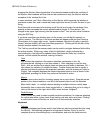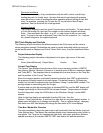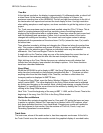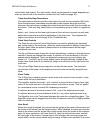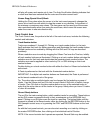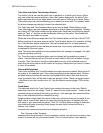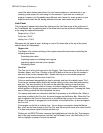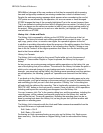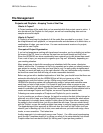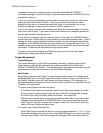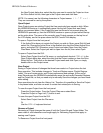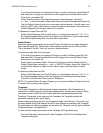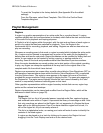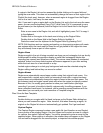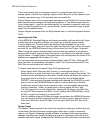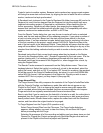
HD24/96 Technical Reference 22
File Management
Projects and Playlists – Keeping Track of the Files
What’s A Project?
A Project contains all the audio that you’ve recorded while that project name is active. It
also contains all the Playlists for that project, as well as housekeeping data such as
sample rate and bit depth.
What’s A Playlist?
A Playlist is a road map for playback of all the audio files recorded for a project. It can
be straightforward track playback, or incorporate edits and decisions as to which take, or
combination of takes, you wan to hear. You can create several versions of a project,
each with its own Playlist.
Concepts of Project Organization
If you’ve had experience working with tape-based recorders, you’ve probably just written
the name of the CD, band, or artist on the tape box and track sheets and that’s that.
Since the HDR24/96 can store considerably more material on its disk drives than would
fit on a reel of tape, you may want to organize your “big reel” differently, depending on
your working situation.
Many people new to hard disk recording are intimidated with file names, directories
folders, and the like. It’s common at first to be uncertain as to when you should create a
new project or version, but at the user level (that’s you) it’s really pretty straightforward.
The way you work will lead you in the right direction. We can’t anticipate every situation,
but here are some hints that will help you make reasonable decisions.
Before we get on with a detailed explanation of disk files, you should know that there are
automatic defaults built into the HDR24/96 that will let you ignore any of this
computerese, push the buttons, and go. While every project needs a name, the
HDR24/96’s operating system will automatically assign a unique and workable name
each time you start a new project. You’ll want to keep track notes on paper as you
would with tape, but until you recognize the benefits of a more structured approach, you
needn’t be saddled with details. The Quick Start and Applications Guides explain how to
create and manage Projects and Playlists, so we won’t repeat the details here.
Following are some examples of Projects and Playlists for you to consider.
If you’re working on an album of songs, it’s logical to envision the disk (either internal or
external) as a reel of tape, one that’s probably long enough to contain the whole album.
One approach is to simply have a single Project name for the entire album, separating
the songs by their starting time, just as you would do with tape. Cues are stored along
with the Project, so you can easily navigate from song to song by hopping among cues.
The disadvantage to this approach is that each time you back up the Project (and you
should!) you’ve backing up a lot of data, more and more as you add more songs, more
tracks, or more overdubs. That takes time.
Another approach is to make each song a new Project. It’s a little more housekeeping
work (though Templates simplify it by giving you most of the setup defaults) but shorter
Projects mean less new data to back up. Having one Project per song makes it



